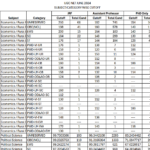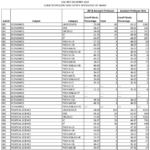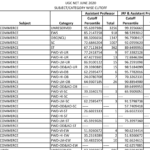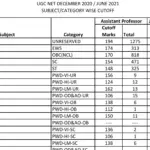Direct and indirect taxes are defined according to the ability of the end taxpayer to shift the burden of taxes to someone else.
Direct taxes allow the government to collect taxes directly from consumers and is a progressive type of tax, which also allows for cooling down inflationary pressure on the economy.
Indirect taxes allow the government to expect stable and assured returns and brings into its fold almost every member of the society – something which the direct tax has been unable to do.
Both direct and indirect taxes are important for the country as they are intricately linked with the overall economy.
As such, the collection of these taxes is important for the government as well as the well-being of the country.
Both direct taxes and indirect taxes are collected by the central and respective state governments according to the type of tax levied.
Comparison between Direct and Indirect Taxes
There are different implications of direct and indirect taxes on the country. However, both types of taxes are important for the government as taxes include a major part of revenue for the government.
| Direct Taxes | Indirect Taxes |
|---|---|
| It is levied on income and activities conducted. | It is levied on products or services. |
| The burden of tax cannot be shifted in the case of direct tax. | The burden of tax shifted for indirect taxes. |
| It is paid directly by the person concerned. | It is paid by one person, but he recovers the same from another person i.e. person who actually bears the tax ultimate consumer. |
| Tax collection is difficult. | Tax collection is relatively easier. |
| It is paid after the income reaches the hands of the taxpayer | It is paid before goods/service reaches the taxpayer. |
| Example Income tax, wealth tax etc. | Example GST, excise duty custom duty sale tax service tax |
Direct Tax and Indirect Tax Types
- Direct taxes are paid in entirety by a taxpayer directly to the government. It is also defined as the tax where the liability, as well as the burden to pay it, resides on the same individual.
- Direct taxes are collected by the central government as well as state governments according to the type of tax levied.
Major Types of Direct Tax include:
• Income Tax: Levied on and paid by the same person according to tax brackets as defined by the income tax department.
• Corporate Tax: Paid by companies and corporations on their profits.
• Wealth Tax: Levied on the value of the property that a person holds.
• Estate Duty: Paid by an individual in case of inheritance.
• Gift Tax: An individual receiving the taxable gift pays tax to the government.
• Fringe Benefits Tax: Paid by an employer that provides fringe benefits to employees and is collected by the state government.
Indirect tax, as mentioned above, include those taxes where the liability to pay the tax lies on a person who then shifts the tax burden to another individual.
Some types of indirect taxes are:
• Excise Duty: Payable by the manufacturer who shifts the tax burden to retailers and wholesalers.
• Sales Tax: Paid by a shopkeeper or retailer, who then shifts the tax burden to customers by charging sales tax on goods and services.
• Customs Duty: Import duties levied on goods from outside the country, ultimately paid for by consumers and retailers.
• Entertainment Tax: Liability is on the cinema owners, who transfer the burden to cinemagoers.
• Service Tax: Charged on services rendered to consumers, such as food bills in a restaurant. Therefore, the prime difference between direct tax and indirect tax is the ability of the taxpayer to shift the burden of tax to others. Direct taxes include tax varieties such as income tax, corporate tax, wealth tax, gift tax, expenditure tax etc. Some examples of indirect taxes are sales tax, excise duty, VAT, service tax, entertainment tax, customs duty etc. However, this is not an exhaustive list of taxes, and more types of taxes are levied by the government on specific cases.
Key differences between Direct and Indirect Taxes
1. Direct tax is levied and paid for by individuals, Hindu undivided Families (HUF), firms, companies etc. whereas indirect tax is ultimately paid for by the end-consumer of goods and services.
2. The burden of tax cannot be shifted in the case of direct taxes while the burden can be shifted for indirect taxes.
3. Lack of administration in the collection of direct taxes can make tax evasion possible, while indirect taxes cannot be evaded as the taxes are charged on goods and services.
4. Direct tax can help in reducing inflation, whereas indirect tax may enhance inflation.
5. Direct taxes have better allocative effects than indirect taxes as direct taxes put a lesser burden over the collection of amounts than indirect taxes, where the collection is scattered across parties and consumers’ preferences of goods are distorted from the price variations due to indirect taxes.
6. Direct taxes help in reducing inequalities and are considered to be progressive while indirect taxes enhance inequalities and are considered to be regressive.
7. Indirect taxes involve lesser administrative costs due to convenient and stable collections, while direct taxes have many exemptions and involve higher administrative costs.
8. Indirect taxes are oriented more towards growth as they discourage consumption and help enhance savings. Direct taxes, on the other hand, reduce savings and discourage investments.
9. Indirect taxes have a wider coverage as all members of the society are taxed through the sale of goods and services, while direct taxes are collected only from people in respective tax brackets.
10. Additional indirect taxes levied on harmful commodities such as cigarettes, alcohol etc. dissuade over-consumption, thereby helping the country in a social context.
What is Non-Tax Revenue?
• While taxation is a primary source of income for the government, it also earns some recurring income other than tax, which is called non-tax revenue.
• While sources of tax revenue consist of few but bulk direct and indirect taxes, the number of sources of non-tax revenue are very large with wide variance in the quantum of collections per source.
• Although there are large sources of non-tax revenue, the quantum of collection per source is much less than that of tax collections.
• For instance, when people avail services offered by the government, like electricity, telecommunication, DTH, broadband etc, they pay bills, which include the share of non-tax revenue as the government provides infrastructure support to facilitate the services.
• The government also collects interest as non-tax revenue on the loans and funds advanced to states for various purposes.
• So, the government collects non tax revenue in return for providing/facilitating any goods or services.
Difference between Tax Revenue and Non-Tax Revenue
• Tax revenue is charged on income earned by an individual or an entity (direct tax) and on the value of the transaction of goods and services (indirect tax). On the other hand, non-tax revenue is charged against services provided by the government.
• It also includes interest charged on loans advanced by the government for various
purposes.
• Note that it is compulsory to pay a part of the income earned/generated and amount of goods and services consumed as tax.
• However, non-tax revenue becomes payable only when services offered by the government are availed.
Components of Non-Tax Revenue
There are several services provided by the government that creates the sources or components of non-tax revenue.
Here are examples of some components of non-tax revenues are as follows:
• Interest: It comprises of interest of loans given to states and union territories for reasons like non-plan schemes (e.g., flood control) and planned schemes with maturity period of 20 years such as modernisation of police forces and also interest on loans advanced to Public Sector Enterprises (PSEs), Port Trusts and other statutory bodies etc.
• Dividends and profits: This includes dividends and profits from PSEs as well as the transfer of surplus from the Reserve Bank of India (RBI).
• Petroleum license: This includes fees to get the exclusive right for exploration in a particular region. Such fees may be in the form of royalty, a share of the profit earned from contact areas during a specific period, Petroleum Exploration License (PEL) fee or Production Level Payment (PLP).
• Power supply fees: This includes fees received by the Central Electricity Authority from the supply of power under the Electricity (Supply) Act.
• Fees for Communication Services: This mainly includes the license fees from telecom operators on account of spectrum usage charges that licensed Telecom Service Providers to pay to the Department of Telecom (DoT).
• Broadcasting fees: It includes license fees paid by DTH operators, commercial TV services, commercial FM radio services etc.
• Road, Bridges usage fees: This includes receipts through toll plazas on account of the usage of national highways, permanent bridges etc.
• Examination fees: This includes fees paid by applicants of competitive examinations conducted by the Union Public Service Commission (UPSC) and Staff Selection Commission (SSC) to fill up vacancies in government offices.
• Fee for police services: This includes the fee received for supplying central police forces to state governments and other parties like Central Industrial Police Force (CISF) to industries etc.
• Sale of stationery, gazettes etc: This includes receipts under ‘Stationery and Printing’ relating to the sale of stationery, gazettes, government publications, etc.
• Fee for Administrative Services: This includes fees received for providing services like audit services, issuance of passport, visa etc.
• Receipts relating to Defence Services: This relates to services provided through Canteen Stores Department (CSD).
Importance of Non-Tax Revenue
Apart from being a source of earnings for the government, non-tax revenues also help in recovering the cost of services offered.
Tax revenue is the biggest source of revenue for the government, but the amount of tax collection may vary due to the employment situation, consumption levels etc, which the non-tax revenues somewhat balanced with a low, but steady flow of revenue from a wide number of sources.
Sources of Non-Tax Revenue of State Governments
Like the central government, the state governments also provide various services such as:
Share this:
- Click to share on X (Opens in new window) X
- Click to share on Facebook (Opens in new window) Facebook
- Click to email a link to a friend (Opens in new window) Email
- Click to share on WhatsApp (Opens in new window) WhatsApp
- Click to share on Telegram (Opens in new window) Telegram
- Click to share on Pocket (Opens in new window) Pocket
- Click to share on Tumblr (Opens in new window) Tumblr











